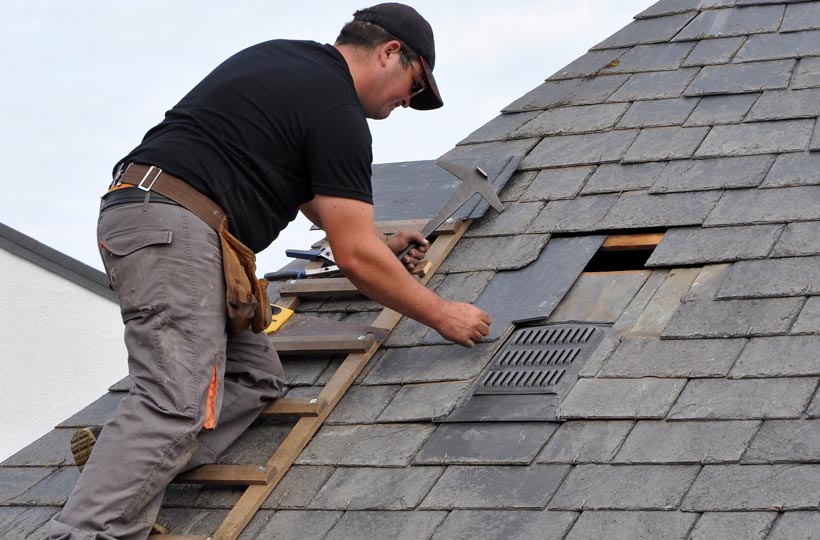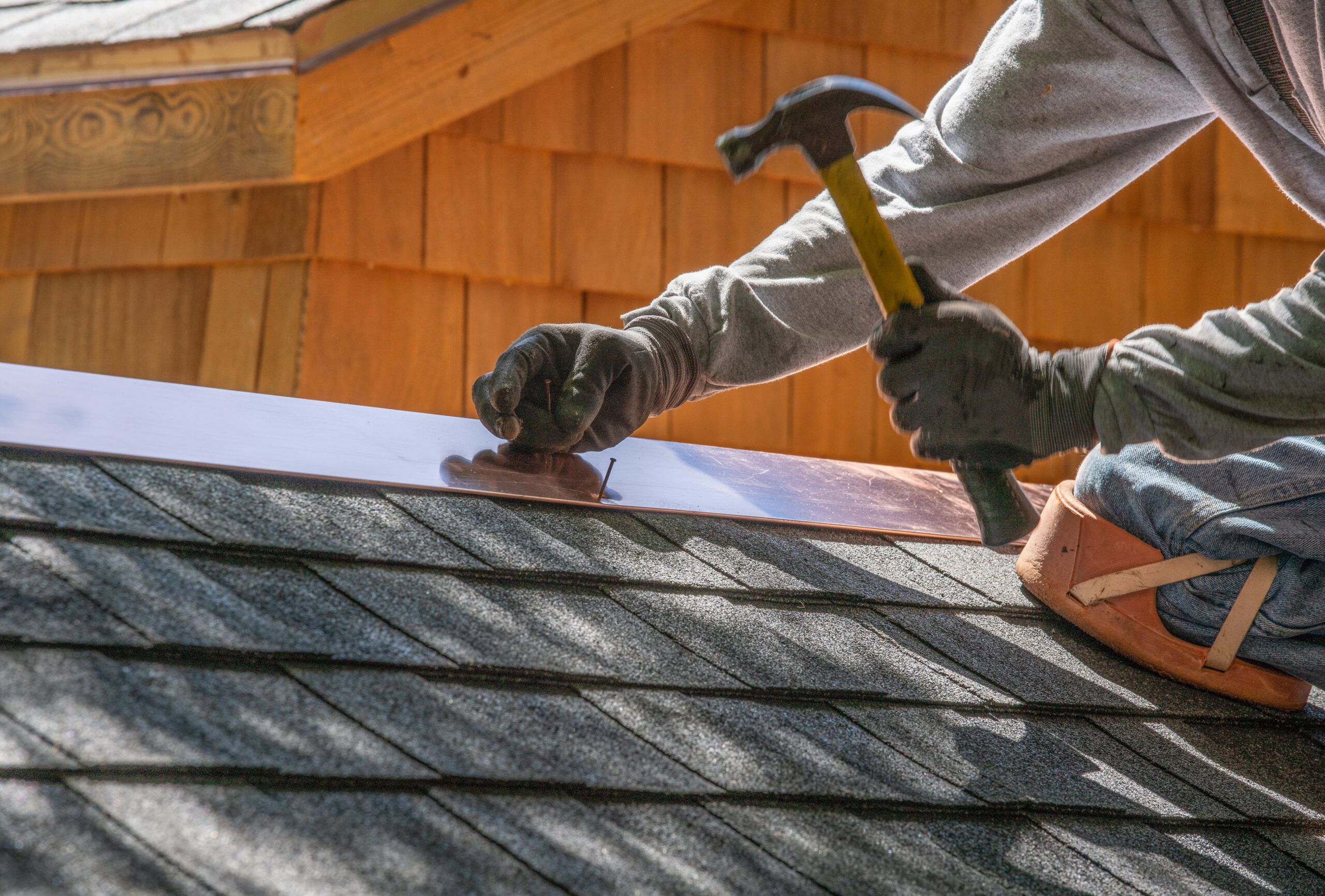Understanding the Different Kinds Of Roof Coverings: A Comprehensive Overview for Homeowners
In the world of homeownership, picking the appropriate roofing style is a choice that carries significant effects for both functionality and aesthetic allure. With a variety of alternatives-- ranging from the typical gable to the contemporary flat-- each kind offers special advantages and challenges that should straighten with the homeowner's ecological factors to consider and details requirements. Understanding these distinctions not only help in making an enlightened option yet also influences long-lasting upkeep and energy effectiveness. As we explore the details of various roof covering kinds, it comes to be apparent that one dimension does not fit all; the ideal selection might amaze you.
Saddleback Roof
Gable roof coverings, defined by their triangular form, are amongst one of the most preferred roof covering designs due to their simpleness and efficiency in dropping water and snow. This style features two sloping sides that satisfy at a ridge, enabling for reliable drain and reducing the danger of water accumulation. The high pitch typically associated with gable roofs improves their capacity to handle heavy precipitation, making them ideal for numerous environments.
Along with their practical benefits, gable roofs offer visual versatility. They can be adjusted to different building designs, from conventional to modern homes. The style can also suit added functions such as dormer home windows, which boost natural light and ventilation in the attic room space.
In addition, gable roofings supply sufficient space for insulation, adding to energy efficiency. Home owners can select from a selection of roofing products, including asphalt shingles, steel, and tiles, even more improving modification choices.
Despite their advantages, saddleback roofs might call for added support in areas susceptible to high winds or heavy snowfall. Generally, the gable roof stays a favored selection due to its blend of functionality, resilience, and visual allure.
Flat Roofs
Flat roof coverings are commonly identified for their minimalist design and sensible applications, particularly in business and industrial settings (oahu roofing). These roofs include a horizontal or nearly horizontal surface, which enables simple building and flexible space application. While they may lack the visual appeal of pitched roofs, level roofing systems use various advantages, especially in urban environments where taking full advantage of room is critical
Among the main advantages of flat roofs is their accessibility. Property owners can use the roofing system area for various purposes, such as roof yards, terraces, or solar panel installments. Additionally, level roofs are generally much more affordable to keep and mount contrasted to their sloped equivalents, as they need fewer materials and labor.
However, flat roofing systems do present particular difficulties. Correct drain is necessary to protect against water pooling, which can lead to leaks and architectural damage. Therefore, choosing high-grade waterproofing materials and routine assessments are essential for making sure longevity. Usual products utilized for level roof coverings include built-up roof (BUR), customized bitumen, and single-ply membrane layers, each offering unique benefits. In general, flat roofings act as a adaptable and useful choice for many property owners and businesses alike.
Hip Roofing Systems
Hip roofing systems are defined by their sloped sides that merge on top, forming a ridge. This style is unique from gable roofing systems, as all four sides of a hip roofing slope downwards towards the walls, offering an extra stable framework. The angle of the inclines can differ, permitting flexibility in building looks and capability.
One of the key advantages of hip roofs is their ability to withstand heavy winds and adverse weather. The sloped surfaces make it possible for much better find this water drain, reducing the danger of leaks and water damage. In addition, hip roofing systems provide raised attic room, which can be made use of for storage or also exchanged habitable locations.
Nonetheless, constructing a hip roof can be much more pricey and complex than simpler roofing types, such as gable roofs. The additional material and labor entailed in producing the inclines and making certain appropriate structural stability can result in higher expenditures. Despite these downsides, many homeowners prefer hip roofing systems for their toughness, aesthetic appeal, and possibility for energy efficiency.
Mansard Roof Coverings
Mansard roofings, often identified by their one-of-a-kind four-sided layout, function 2 slopes on each side, with the lower slope being steeper than the top. This architectural design, originating from France in the 17th century, is not just cosmetically attractive yet functional, as it makes best use of the useful room in the top floors of a building. The steep reduced slope permits more headroom, making it an optimal choice for attics or loft spaces, which can be converted right into living rooms.
Mansard roofing systems are identified by their convenience, fitting numerous building designs, from typical to modern. They can be created with various products, consisting of asphalt roof shingles, slate, or metal, giving property owners with a series of choices to match their budget plans and choices. Additionally, the layout permits the combination of dormer windows, enhancing all-natural light and air flow in the top levels.
Nevertheless, it is vital to consider the potential disadvantages. Mansard roofing systems may call for more maintenance because of the complexity of their design, and their steep inclines can be challenging for snow and rain drainage. In general, mansard roofings combine elegance with practicality, making them a popular choice among property owners seeking unique building functions.
Lost Roofings
As property owners progressively look for simpleness and capability in their architectural layouts, lost roofing systems have emerged as a prominent choice. Defined by a single sloping plane, a shed roofing presents a minimalist aesthetic that complements numerous home designs, from contemporary check it out to rustic.
One of the primary advantages of a shed roofing system is its uncomplicated building and construction, which frequently equates to lower labor and product costs. This design permits efficient water drain, minimizing the danger of leakages and water damages. In addition, the upright slope offers adequate room for skylights, enhancing natural light within the inside.
Lost roofs likewise offer versatility in terms of use. They can be properly integrated right into enhancements, garages, or exterior structures like sheds and pavilions. Furthermore, this roofing design can accommodate numerous roofing products, consisting of metal, asphalt shingles, or even environment-friendly roofings, straightening with green initiatives.
Nevertheless, it is vital to think about local environment problems, as hefty snow tons might require changes to the roof's angle or framework. In general, shed roofing systems offer a functional and aesthetically pleasing option for house owners aiming to make the most of capability without compromising style.
Final Thought


Gable roofings, identified by their triangular shape, are amongst the most preferred roof covering styles due to their simpleness and effectiveness in losing water and snow. oahu roofing. The steep pitch commonly connected with gable roof coverings boosts their capacity to handle hefty precipitation, making them suitable for numerous environments
While they might lack the aesthetic appeal of pitched roof coverings, level roof coverings provide numerous advantages, specifically in urban atmospheres where making the most of area is vital.
